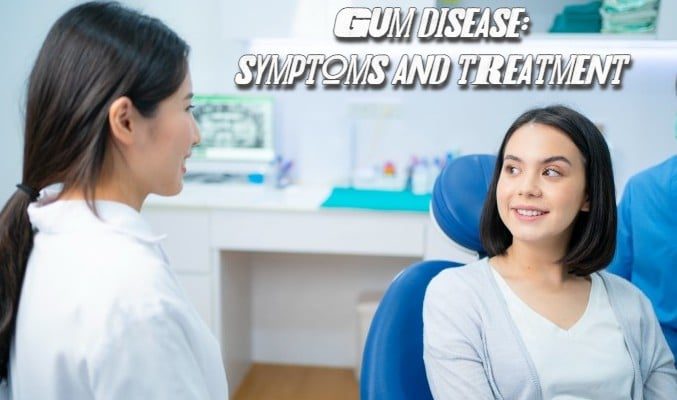What is periodontitis?
Periodontitis is a chronic disease that can start with plaque buildup on your teeth. Plaque is the sticky, yellow film that develops when bacteria in your mouth break down food particles and dead cells (also called plaque). Over time, plaque can harden into a yellowish-white substance called tartar. Periodontitis begins with plaque build-up, but it can also be caused by gum damage or other oral problems.
Once the body’s immune system recognizes the infection as harmful, it sends white blood cells to attack the site of infection. This causes inflammation (swelling) and redness of your gums and teeth. As the inflammation progresses, secondary sores develop at the base of your teeth – what’s known as “gingivitis.”
In response, the body starts filling these sores with gum tissues and bone as it tries to defeat the infection. If you have periodontitis for a long time without receiving treatment, these sores become infected and will eventually lead to tooth loss if left untreated.
Symptoms of gum disease
You can tell if you have gingivitis because the affected area will be warm and tender to the touch. If you suspect that you have gum disease, the best way to prevent further damage is to visit your dentist regularly for a dental checkup and cleanings. In addition, it’s important to maintain proper oral hygiene with regular brushing, flossing, and routine dental exams.
That said, here are some signs of gum disease include:
- Red, swollen, or bleeding gums
- Bad breath
- Gum recession (when gum tissue has receded from the teeth)
- Pain when chewing or when eating certain foods (such as hard candy)
- Itching, irritation, or numbness around the mouth, including the lips
Treatment for gum disease
Gum disease can lead to tooth loss or periodontal bone loss if not treated. That’s why there’s a strong case for early diagnosis and treatment. In fact, it’s important to treat gum disease as soon as possible because moderate gum disease may progress into advanced stages of bad oral health before you notice any visible symptoms.
If you do have gum disease, there are several treatment options available to you. Most involve using medicines or procedures that kill bacteria or reduce inflammation. These medications include antibiotics (such as tetracycline) to fight bacteria. Your doctor may also recommend mouthwashes such as chlorhexidine.
Tooth brushing is the most important step in fighting gum disease. However, if you haven’t brushed your teeth for several days or more, take some ibuprofen to help ease any pain. You can also gargle with salt water or rinse your mouth with a fluoride-containing mouthwash.
If your gums bleed easily, it’s a good idea to brush after meals and at bedtime, as well as before going to sleep. Try to brush as soon as possible after waking up, if possible. A full jaw may be easier to clean than an underline area of the mouth that is hidden by food particles.
In general, your first step should be to schedule an appointment with your dentist. They will take an assessment and decide whether you need to see a periodontist. If your dentist believes that the gum disease-causing your problem is advanced, they may recommend that you see a periodontist, who can provide information about treatment options and help determine which one might be best for you.
Need help?
If you believe you have gum disease, consult the best dentist in Vizag at Sri Satya Dental Hospital. Reputed as the best dental clinic in Vizag, we have highly experienced dentists who specialize in treating gum disease. Connect with us today and let us help you achieve the desired dental health.

